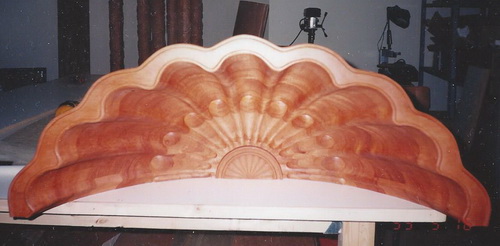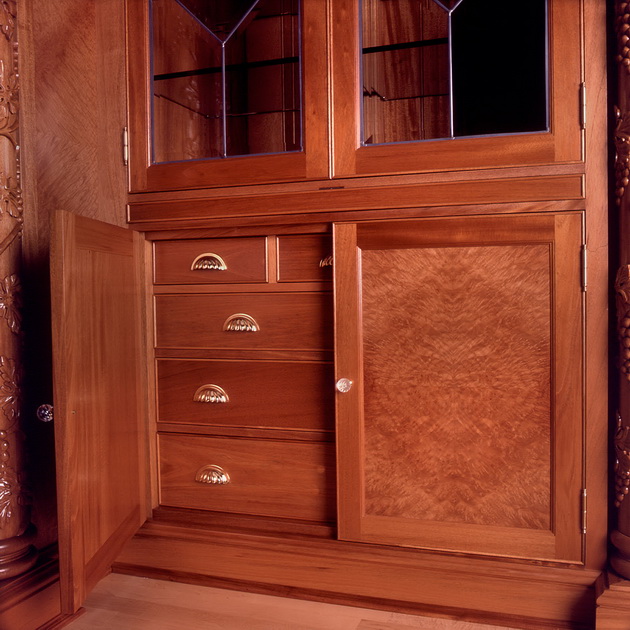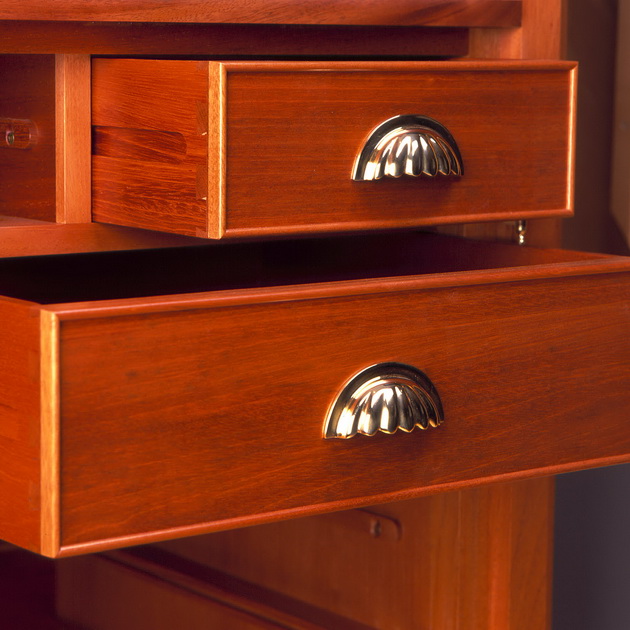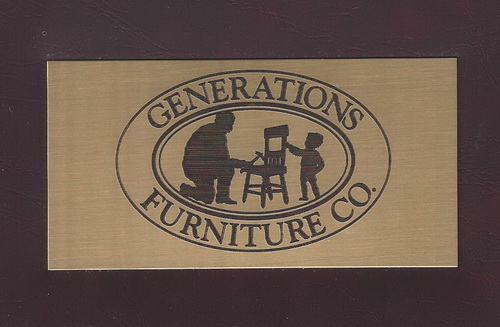Leanne and I chat about the Music & Beyond Wine Auction this week that will be offering more than 150 bottles on the block, along with my wine cellar.
Click the arrow above to play the video.
Why am I donating my cellar?
I’v given up wine.
Kidding.
We are moving to a smaller home so call this downsizing on a grand “scale.”
You can bid on the cellar right now online here.
You don’t have to attend the auction in person, or even live in Ottawa to bid on the cellar and/or wine bottles as they can be shipped to you anywhere around the word. The cellar comes apart in separate pieces that can easily be reassembled.
Cheers,
Natalie
P.S. Julian Armour, Executive Director of Music & Beyond, held a special edition of our Live Video Wine Tastings:
Which insider tips will help you bid on bottles at this wine auction and others? What’s the back story on this wine cellar? Just for fun, which pairings work best for music and wine?
Pour yourself a glass of wine and watch the conversation by clicking on the arrow above!
The three-cabinet wine cellar design above features the finishes and design touches from the last era of custom-built cabinetmaker craftsmanship from the 1850s, when designing and building heirloom pieces were meant to be passed down from one generation to the next.
Details include hand-carved columns affixed to a breakfront cabinet structure.
The upper sections are composed of crown and frieze moldings with inset clamshell (modeled after the Oval office in the White House, and representing the bounty of land and sea) and wood panels.
The doors and drawers are cock beaded and slide seamlessly.
The doors are fitted with bevelled Art Glass, cane-leaded, and fitted with custom brass and crystal hardware from Germany and Austria.
The cabinets are constructed of Brazilian Mahogany with custom Mahogany and Madron burl panels. Wine racks are made with heartwood Redwood from California.
This three-piece wine cabinet can be temperature and humidity-controlled, and was designed to meet exacting requirements of fine wine aging and storage.
The total length of the three units is just under 13 feet, with the two side units about 4 feet each that are 2.5 feet deep and the middle unit about 5 feet in length and 3 feet deep. It’s 8 feet tall.
The three units can be disassembled into 13 pieces and rebuilt, which Phil Entwistle, the master craftsman who built it, has done previously and can adjust to fit a new space.
The center unit holds almost 300 bottles and lights up to display them if you wish, or can be left off. This is also the unit that is temperature- and humidity-controlled.
We didn’t have to get an extra special electrical work done in our home to install it, as the cooling unit required only a normal household 120 volt receptacle. There was just one other regular outlet for the lights.
Just for fun, Leanne and I also chatted about pairing wine and music on this CTV Video.
Wine Auction Experts
PATRON: VERONIQUE RIVEST
Veronique is one of the most respected sommeliers in Canada and abroad, with over twenty five years experience in the hospitality and retail industries, as well as in education and consulting. Canada’s Best Sommelier in 2006 and 2012, and Best Sommelier of the Americas in 2012, she placed in the top 12 at The World’s Best Sommelier Competition in 2007 and 2010. In March 2013, she became the first woman ever to make a podium at the World’s Best Sommelier Competition in Tokyo, by taking 2nd place, the highest ranking ever for a sommelier from the American continent.
In 2014, Veronique opened SOIF Wine Bar in Gatineau, a place to share, exchange and learn around wine.
Named Wine Woman in Paris in 2007, Véronique is also a talented speaker and writer, a set of skills that has led her to teach, broadcast and write in the most prestigious wine and food magazines, radio and TV programs, and to give lectures around the world. Since 2015, she is the wine columnist for La Presse.
Beyond all these recognitions, Veronique remains genuine and approachable, with an infectious enthusiasm about sharing the great pleasures of wine.
AUCTIONEER: STEPHEN RANGER
Stephen Ranger has over 25 years experience in the art world as an auctioneer, specialist appraiser and consultant. Stephen pioneered the sale of Fine Wine at auction in Canada and has been involved in some of the highest grossing sales of art and wine at auction in the last ten years. In addition, Stephen is deeply committed to serving his community and contributes his services and expertise to over twenty events each year. In 2011, Stephen founded Concrete Contemporary Auctions and Projects, to develop the auction market for Contemporary Canadian Art. Stephen is Vice President, Business Development for Waddington’s, Canada’s leading auctioneers.
www.rangerfineart.com
APPRAISER: ROBERT JULL
Mr. Jull is the owner of Vinifera Wine Services that was established in 1988. He is a wine importer, specializing in high quality regional French, Italian, and Ontario wines. Robert travels to Europe a minimum of two times a year, and tastes in all major French, and Italian viticultural regions. Vinifera currently represents approximately 70 high quality domaines. Robert has been involved in wine appraisal for the Toronto Symphony’s Fine Wine Auction since 1990, and was the appraiser, and consultant, for the first five LCBO, Vintages Fine Wine Auctions. In addition, Robert has been doing wine appraisals for insurance and property dispute situations since 1993, including assessment of perils, and tasting.
Currently Robert works in the capacity of appraiser for 15-20 annual charitable wine auction events. He has extensive international purchasing experience at auction, wholesale and retail levels.

Here’s the story of our journey in building it …
Calm, Cool and Collected
“You know we can’t buy that,” I said gently wrenching the bottle of 1996 Chateau Cos d’Estournel from my husband’s grip.
“But it’s going to be fantastic in five years… and triple the price,” he pleaded.
“It needs to be aged and we don’t have the right conditions for it.”
We slouched away from the wine shop as another liquid treasure teased us from the window. Like Amelia Earheart without a plane or Miles Davis without a trumpet, we were wine lovers without a cellar. It was time to get serious.
For many people “getting serious” can be triggered by either a number, such as owning more than one hundred bottles, or by an event, such as accidentally sloshing their best bottle of Opus One into the beef bourguignon.
At this point, it’s easy to enkindle a focused passion to build the den of Dionyious. However, we knew we’d never own one of those arching stone subterranean vaults. First, we don’t live in a British manor house and second, we don’t have the budget of an eighteenth-century aristocrat. In fact, our cellar lineage is quite plebeian.
In the spending euphoria of our first jobs after graduating from college, we started buying bottles without baby animals on the label. We laid our precious purchases in separate Styrofoam cartons that had been used to ship mail-order steaks.
While we had easily mingled our golf shirts and had blithely shelved our books together, we drew the line at merging our wine collections — afraid to take that last free fall of intimacy. Things had to change.
Our first improvement was to put the wine in wooden racks in a cool, dark area of the basement. We subsequently discovered that few environments are as potentially destructive to wine as the home, since most basements aren’t temperature-controlled. A consistently cool temperature of ten to fifteen degrees Celcius enables the wine to age slowly to greater complexity. Excess heat cooks off its finer characteristics, while too much chill retards its maturation.
We were also fortunate that the humidity in our basement was relatively stable, at about seventy percent. Too much humidity causes mold, damaging the labels; while too little dries the cork, oxidizing the wine.
This is why wine is stored on its side — to keep the cork wet and the oxygen out. (This is also why cellars are often tiled rather than carpeted: carpeting holds mold-inducing moisture.) Darkness is preferable even though wine is bottled in coloured glass to protect it against the damage caused by light.
To fill our racks, we bought value wines to drink within two to three years, in the $10 to $25 range per bottle from Australia, Chile, Canada and lesser known regions of France, such as Languedoc-Rousillon. For 200 bottles, the racking cost $400 and the wine, which we bought over time, another $3,500.
Our desire to buy and store more wine grew as our school debt shrunk. We considered renting space, but no suitable facility existed in Ottawa at the time.
This is attractive to those living in apartments or those who have recently downsized their living space after children have moved out. Existing facilities in Montreal charge $1.45 per bottle per year, so 200 bottles would run $290.
Still, most oenophiles long for a cellar of their own, and for us, the point of a cellar was to have an immediately accessible supply of wines for dinner.
Older basements can be adapted to hold a cellar; people with new homes (especially is they’re building) can make the built-in basement cellar part of their plans. Either way, it’s important to ensure that the room is dark, properly insulated to control the temperature and free from such sources of vibration as furnaces, fridges or heavily trafficked stairs.
Also avoid leaving food, cardboard boxes or paint in the cellar — unless you like your wine with a varnished finish. The chemicals in these materials break down over time and can seep into the wine through the cork.
The cost of a built-in cellar will vary depending on the size but can start as low as $3,000 for some simple adaptations to an existing basement. (That doesn’t include importing Bordeaux dust for that instant authentic look, of course). Smaller fridge units also work well in a basement, guaranteeing ideal conditions for about 50 to 100 bottles.
 However, a built-in cellar wasn’t an option for us: our home had no basement, and since it was built on bedrock, digging out a cave would have been exorbitantly expensive. So we turned to stand-alone options. For us, a prefabricated metal unit had as much aesthetic appeal to us as a fridge in our livingroom.
However, a built-in cellar wasn’t an option for us: our home had no basement, and since it was built on bedrock, digging out a cave would have been exorbitantly expensive. So we turned to stand-alone options. For us, a prefabricated metal unit had as much aesthetic appeal to us as a fridge in our livingroom.
We did see some attractive units, ranging from $5,000 to $10,000 or more, depending on the type of wood and accessories. However, we wanted a piece of furniture – low-tech, hand-made and traditional — that would contrast with our modern lifestyle. It would be an anchor point in our home; something to celebrate the allure and romance of wine: a Chateau d’Yquem for the eyes.
 It seemed we had locked ourselves in the cellar of our imagination. Then a friend mentioned Phil Entwhistle as someone who made furniture. He’s a cabinetmaker the way Joe DiMaggio was a baseball player.
It seemed we had locked ourselves in the cellar of our imagination. Then a friend mentioned Phil Entwhistle as someone who made furniture. He’s a cabinetmaker the way Joe DiMaggio was a baseball player.
We asked Phil to make us some sketches. What he proposed was an elaborate eighteenth-century design with motifs symbolizing the bounty of the land and sea. It took hundreds of hours to hand-carve the curling vines, grapes and leaves with threadlike veins. Each column of the cabinet was so finely carved that thousands of chiseled facets produced a multidimensional prism effect when the light hit the surface.
 What Phil built was the antithesis of mass produced, assembly furniture. Details included drawers that were cock beaded and dovetailed to fit seamlessly; individually blown glasswork, beveled and leaded to complement the design; ahand-carved, backlit cockleshell crowning the cabinet; and solid brass fittings from Germany.
What Phil built was the antithesis of mass produced, assembly furniture. Details included drawers that were cock beaded and dovetailed to fit seamlessly; individually blown glasswork, beveled and leaded to complement the design; ahand-carved, backlit cockleshell crowning the cabinet; and solid brass fittings from Germany.
The internal lattice to hold the bottles was made from 2,000-year-old California redwood trees that can span up to 30 feet in diameter. It’s illegal to cut these trees, so buyers must wait until they fall naturally. Redwood is the best wood for racking wine as it’s naturally odor-free, doesn’t require staining, resists rot and mildew, and is strong relative to it’s weight, so it doesn’t bend easily.
 For the outside veneer, a combination of mahogany and the burl from the madrone tree were used. Since burl is an outgrowth on a tree, the design effect is one of spiraling three-dimensional clouds. Unlike commercial mahogany furniture, which is often stained darkly to hide flaws, this piece shows the natural grains of the wood.
For the outside veneer, a combination of mahogany and the burl from the madrone tree were used. Since burl is an outgrowth on a tree, the design effect is one of spiraling three-dimensional clouds. Unlike commercial mahogany furniture, which is often stained darkly to hide flaws, this piece shows the natural grains of the wood.
These will become richer and more textured over time, like the wine we’re aging in it — both wood and wine tannins, exposed to oxygen, have a slow, natural aging process.
 When this stunning cabinet was installed in our livingroom, my husband and I could think of only one thing: stocking it. Since we had decided that our cellar would be for drinking, not collecting dust, we didn’t focus on trophy wines but rather on wines we knew we’d drink — from an eclectic mix of wineries, regions and vintages.
When this stunning cabinet was installed in our livingroom, my husband and I could think of only one thing: stocking it. Since we had decided that our cellar would be for drinking, not collecting dust, we didn’t focus on trophy wines but rather on wines we knew we’d drink — from an eclectic mix of wineries, regions and vintages.
We decided that phase one of the cellar would hold 300 bottles and we’d add space for up to 1,000 bottles at a later date.
A good cellar creates a flow of great wine over a lifetime. A naturally occurring phenomenon among wine lovers is that purchases expands to fit wine cellar capacity. So it helps to buy wines in a graduated sequence, with some that are ready to drink immediately and others for aging.
Although ninety-nine per cent of the world’s wine is meant to be consumed before the next vintage, it’s that other one per cent that cellar owners are fanatic about.
Buying wine by the case is always a smart strategy. It enables you to continually sample a wine over the years, charting its development and recognizing when it peaks. There’s nothing sadder than drinking a superb wine, knowing it’s your only bottle.
 One of the biggest myths is that only red wines belong in a cellar. In fact, white wines that have a high degree of sweetness, acidity or alcohol can age gracefully for many years, getting smoother and taking on toasty, nutty or honeyed flavours. So we’ll also be stocking up on German riesling, vintage champagne, sauternes, Loire chenin blanc, chablis and late-harvest wines from a number of countries.
One of the biggest myths is that only red wines belong in a cellar. In fact, white wines that have a high degree of sweetness, acidity or alcohol can age gracefully for many years, getting smoother and taking on toasty, nutty or honeyed flavours. So we’ll also be stocking up on German riesling, vintage champagne, sauternes, Loire chenin blanc, chablis and late-harvest wines from a number of countries.
It makes financial sense to buy wines upon release when they are cheapest and most available. Even if our goal were to earn a return, we would still buy wines we like. That way, if the market went south, we could drink our liquid assets — which would dull our financial pain considerably.
We’d also invest in blue-chip wines, those that have long-standing demand. Domaine Rominée-Conti, Antinori, Chateau d’Yquem, Chateau Margaux and Chateau Latour are just some of the Dow Jones Industrials of the wine world.
Finding these wines isn’t difficult, however assessing if they’ll continue to increase in value is — particularly given the recent irrational exuberance in wine prices.
An approach we may try is to buy undiscovered wines we like and bet that they’ll increase in the future. This gives you the bragging rights akin to having paid a $5 cover charge at the local bar to watch Céline Dion before she made it big.
Californian cult favourites such as Screaming Eagle, Laurel Glen and Grace Family are examples of wines that have returned up to 1,000 percent in just five years, which beats Microsoft stock hands down. Taking the investment approach to new heights, the musical theatre composer Andrew Lloyd Webber auctioned his 18,000-bottle cellar for US$6.1 million in 1997.
 Stocking the cellar is one thing, but drinking and sharing wine is another. Like the turn-of-the-century barons who believed you should give your fortune to charity and die penniless, a friend suggested that our aim should be to die with one great bottle left in the cellar – maybe a magnificent 1945 Chateau Cheval Blanc. It’s all in the timing of course.
Stocking the cellar is one thing, but drinking and sharing wine is another. Like the turn-of-the-century barons who believed you should give your fortune to charity and die penniless, a friend suggested that our aim should be to die with one great bottle left in the cellar – maybe a magnificent 1945 Chateau Cheval Blanc. It’s all in the timing of course.
 In the meantime, we look forward to sharing wine with friends over convivial dinners, on long winter evenings in front of crackling fires. It’s the social aspect of wine that gives it an edge over other types of collecting. “Come see my coin collection” just doesn’t have the same warmth as “Come share some wine with me.”
In the meantime, we look forward to sharing wine with friends over convivial dinners, on long winter evenings in front of crackling fires. It’s the social aspect of wine that gives it an edge over other types of collecting. “Come see my coin collection” just doesn’t have the same warmth as “Come share some wine with me.”
Take $150 worth of flowers to friends for dinner and they’ll think you’re an extravagant nutter; take a $150 bottle, and you’re a connoisseur who treats friends well.
 Our cellar is not about investment, vanity bottles or one upmanship. It is about celebrating all that wine encompasses: taste, history, science, culture, friendship and intimacy.
Our cellar is not about investment, vanity bottles or one upmanship. It is about celebrating all that wine encompasses: taste, history, science, culture, friendship and intimacy.























